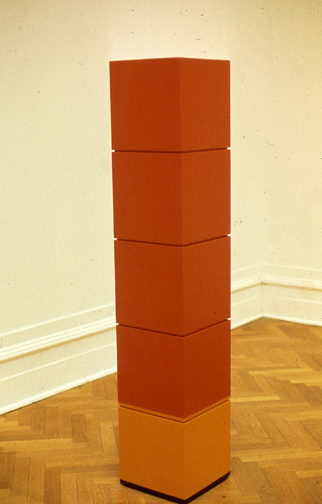36 days - 1
Todays 1 is based around the movement and lifestyle concept of minimalism. Having watched the Netflix documentary on the lifestyle side of minimalism I've decided there's nothing interesting about it but the overarching philosophical impact of the concept on design and movements it has been inspired by and even employed in before this 21st-century hipster fad.

"In visual arts, music, and other mediums, minimalism is an art movement that began in post–World War II Western art, most strongly with American visual arts in the 1960s and early 1970s. Prominent artists associated with minimalism include Donald Judd, Agnes Martin, Dan Flavin, Robert Morris, Anne Truitt, and Frank Stella. The movement is often interpreted as a reaction against abstract expressionism and modernism; it anticipated contemporary postminimal art practices, which extend or reflect on minimalism's original objectives."
Agnes Martin particularly stood out to me due to her simplistic painted sculptural square pillars and their obvious structural resemblance to the number one. When we boil down the number to its essential elements it can be argued that this single vertical line is all that's strictly needed. However, of course, there's room for ambiguity within this assumption as the pillars Agnes martin made were not intended to look like the number one and could also be perceived as the letter I or l or an ice lolly or just about anything that stands vertically and straight.

Research then turned towards the origins of minimalism which, especially in Europe can be widely attributed to the Bauhaus movement. Bauhaus existed on the modernist principle that everything in a design should be reduced or minimised into its purest form. In order to decipher how minimalism differs from the Bauhaus movement, we must first look at the eras from which each respective movement sprung. Originating the early 1900s Bauhaus developed as a rejection of the traditional values of design that had been held in certain respects for decades. The primary example of what modernism and Bauhaus were rejecting is ornate styles of architecture, furniture design and art such as art nouveau that was popular in the late 1800s and very start of the 20th century. However, on the other hand, postmodernism birthed minimalism in the 1960s, a postwar era where it felt as though anything was possible so as a reflection of this new artistic freedom artists sought to push the boundaries of art in whichever way possible. One distinctive direction was to take Bauhaus minimalism and push it further and perhaps, more importantly, take it away from the primary design-focused or originating Bauhaus. Even if the Bauhaus did produce a large number of incredible works of art they were all from a design perspective, whereas minimalism removed this influence and opened up the genre to be a more overarching lifestyle and artistic ethos existing outside of the confines of modernism and pushing the minimalism the Bauhaus began even further into purism. The geometric order and style of Bauhaus was a big inspiration behind the final aesthetic of the 1 with the below 50 years of Bauhaus poster acting a perfect retrospective look on the utilization of Bauhaus minimalism, it felt apt to base the post off this.
The final prediction of the 1 boiled back down to 'what are the essential elements'. The backbone of course but then the top angle is necessary to distinguish the character from an I or l. However, then it can also be argued that the 1 needs a base that's larger than the one on a letter l or it can blend into that letterform.
post:
"1 is for Minimalism - the concept of stripping a piece of design down to its essential elements and achieving simplicity. Developed in the 60s and 70s as a reaction to the consumer boom the aesthetics of the movement are rooted in the Bauhaus purity of form mantra. Colours and shadow inspired by the iconic 1968, 50 years of Bauhaus poster."





Comments
Post a Comment